Journal
Edith Machinist - march 6, 2018
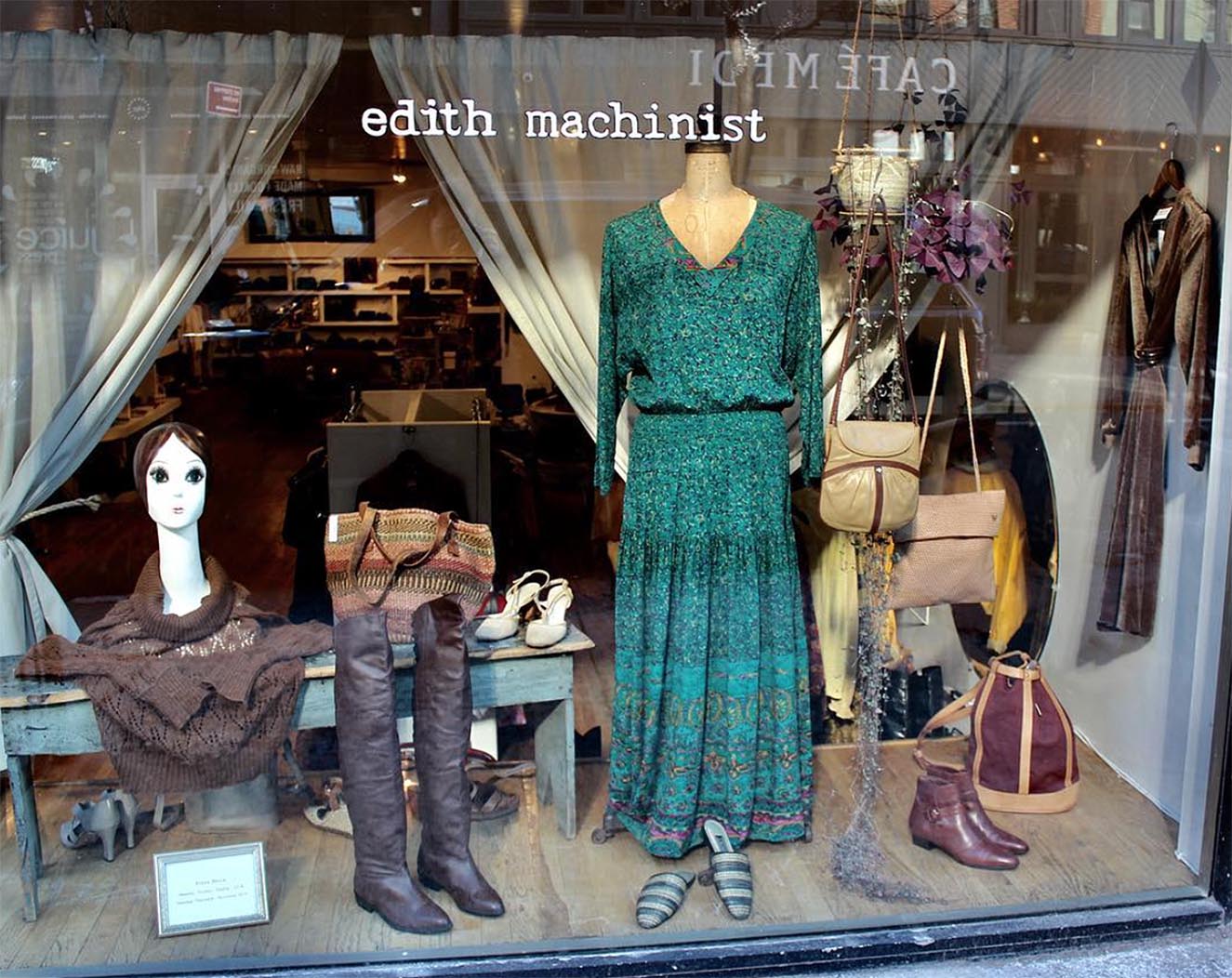
104 Rivington Street, NYC 10002 | edithmachinist.com | @edithmachinist
As a long time New Yorker, I feel like I’ve done a lot of growing up in this city, and that this city has grown into a part of me. Not only has it taught me a lot about who I am, but it’s also connected me to so many special people and places that have influenced me along the way. I love that! And, in that spirit I wanted to start this journal of interesting fashion, lifestyle, & creative characters I’ve had the pleasure to meet.
Edith Machinist has always been one of my favorite vintage shops in NYC, as well as a longtime staple on the the LES. I have such a love for the 70’s & 80’s, that honesty this place is like heaven to me. The selection is very well edited and laid out in a way that’s easy to shop. Definitely worth the trip, if you haven’t been there already!
As a customer over the years, I’ve had the opportunity to get to know Edie, who is the owner of Edith Machinist. She has such an impeccable eye for fashion, and is an influencer in her own right. I got the chance to catch up with Edie last week, to ask her some questions I’ve always been curious to know more about.
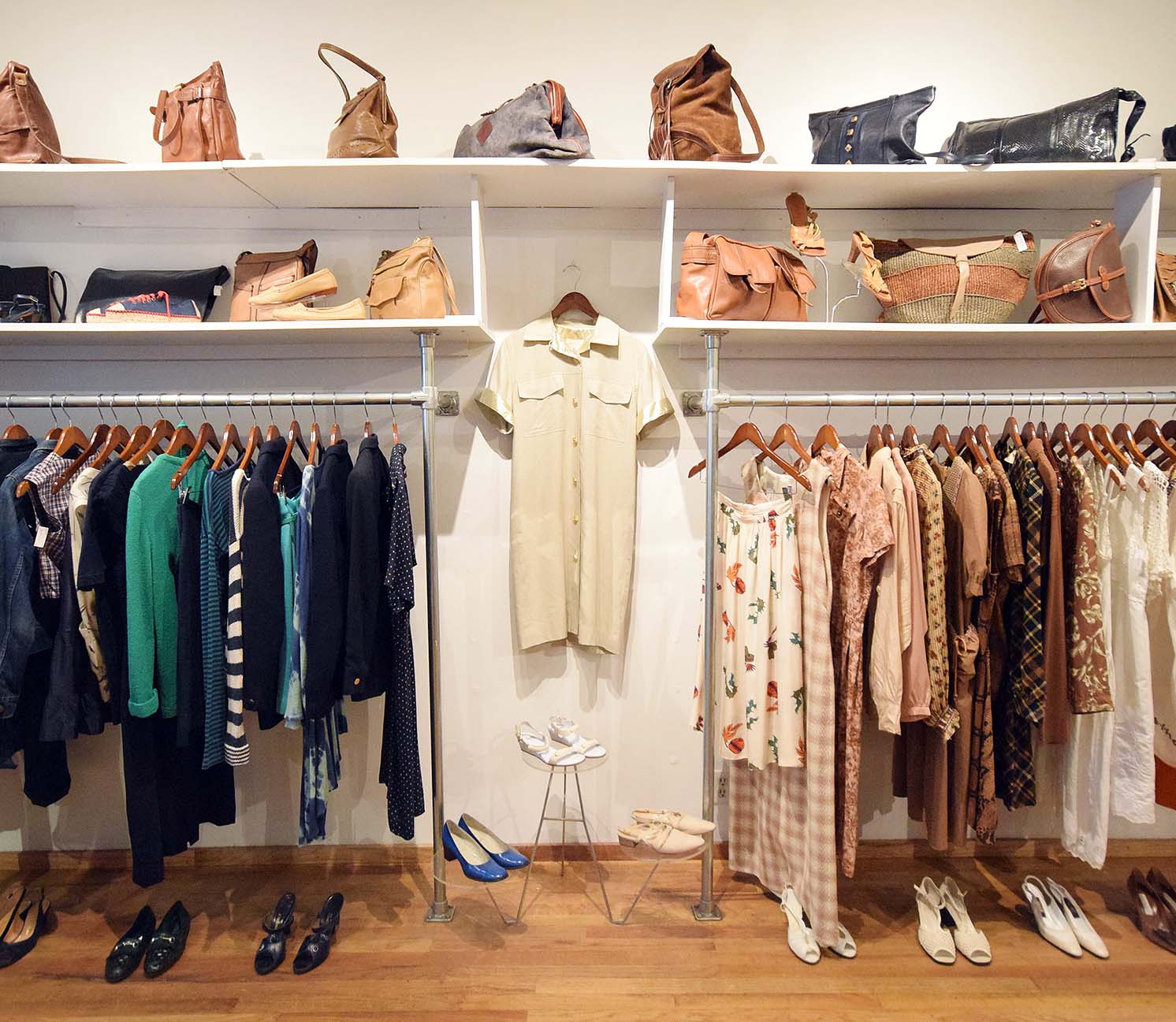
RN: When did you first open Edith Machinist?
EM: I opened the store in early 2002, which seems like a lifetime ago. It’s hard to imagine for those who weren’t living in New York City then, but it really was a more fragile city during that period than the robust one we know now. Particularly, the downtown area was still recovering and there was a lingering sorrow that hung in the air. I had just graduated from college in the city, and I remember some of my classmates and other acquaintances I knew, were planning to “flee” and strangely, I felt more inured to this wounded city than ever before. Since many storefronts were empty in lower Manhattan at that point, I wanted to take part (in a small way) in the return of a thriving creative and independent community in downtown Manhattan. If you were someone who had an artistic bent, and wanted to find something unique, you had to seek out an independent, brick and mortar boutique, and that had always been my experience as a young woman in New York City, how I discovered my own style, and what heavily informed my desire to open an independent shop.
RN: Where did you grow up & what compelled you to move to NYC?
EM: I grew up in a suburb outside of Boston, and moved to NYC in the late nineties for college. I had fantasized about living in New York City throughout my middle and high school years, and I think it was a forgone conclusion that I would end up living here. In the early ’90s, I was an obsessive reader of Sassy magazine! Does anyone remember this magazine? They used to shoot these gritty spreads in the East Village with real girls, mixing designer and vintage clothing, and Sassy was a huge inspiration for me – both in areas of self-expression and for the general allure of living in New York City.
RN: How did Edith Machinist begin? Have you always had a love for vintage?
EM: During college, I had a weekend booth selling vintage clothing and accessories at the now-defunct antique market on 25th Street and 6th Avenue called the Chelsea Market. The market was in its heyday during the period I was there – the late ’90s to the early 2000s – and the aisles were always packed with shoppers, with celebrity sightings a regular occurrence. You have to remember these were the days before eCommerce, and this market was the place to go in NYC for interesting items. People would turn their market-going into a whole afternoon affair, and have it be their weekend NYC ritual. The market scene was a lively affair with vendors, who were each more eccentric than the next – some really free birds – and I remember how each booth had its own specialty (like the chandelier guy and Murano glass lady) with its own character and unique set-up. The carnival-like atmosphere was formative for me: I was just 19-20 yrs old, and my eyes were wide open, soaking it all in, and I can remember pinching myself that this was the gritty, oddball New York City I imagined it to be when I was growing up in suburbia. That antique market offered something of a fertile training ground for me as I moved my makeshift booth into a more permanent brick and mortar store some time afterward. I figured I was having modest success at the market, and why not continue for a little while, but honestly, never imagined at the outset that I would own the store as long as I now have.
And, yes, I have always loved vintage, even as a young child, because it went hand in hand with the notion of collecting, which I think, was embedded in my DNA. My father has a vast used book collection that he has amassed over the course of 50 years, and this idea of creating an archive, a physical monument that can be touched and held, was ingrained from early on, as well as the thrill of the hunt!
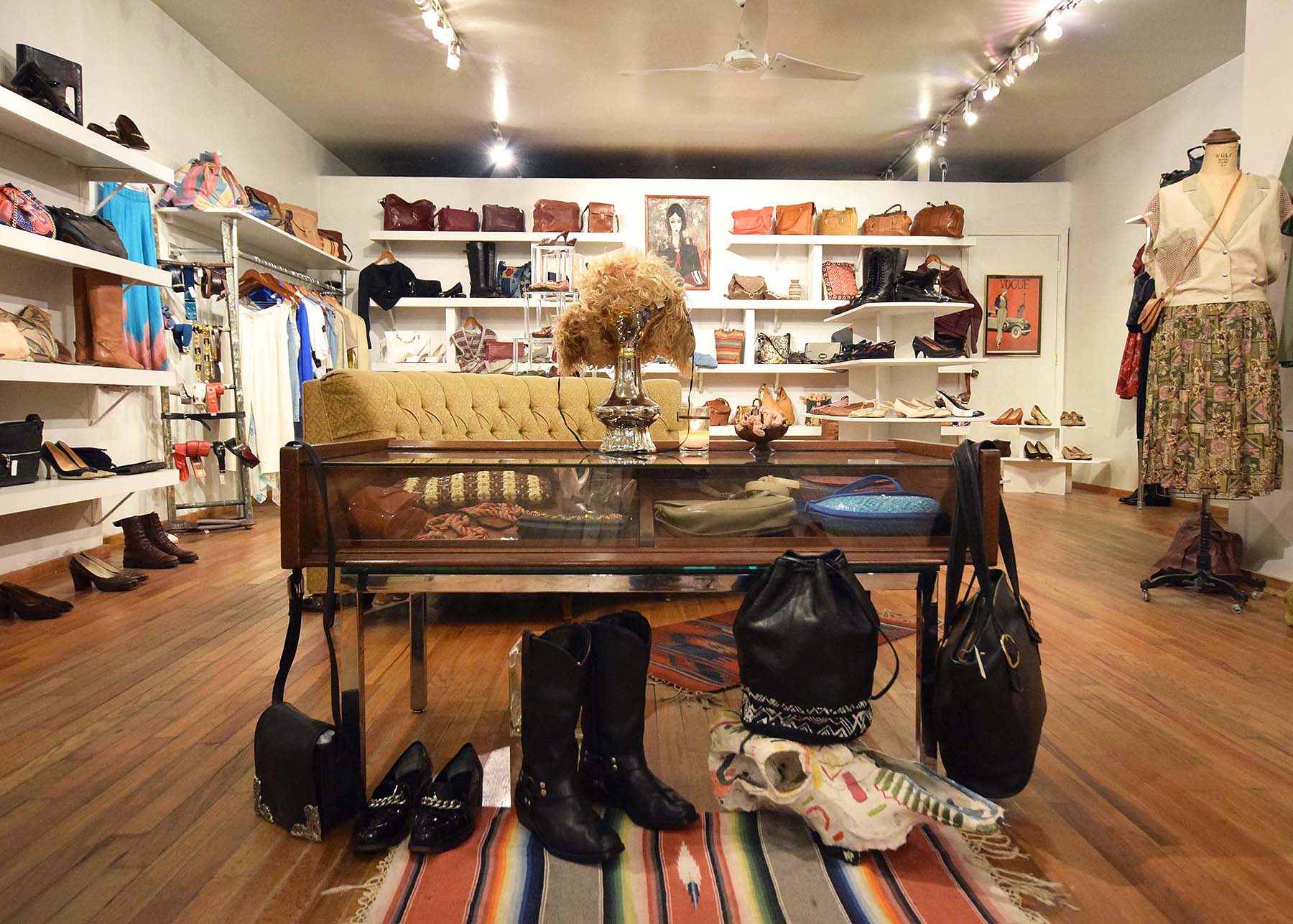
RN: Where does the name Edith Machinist come from?
EM: The name of the store is my own name! It’s not a typical name, so most people think it’s fabricated, which is just fine by me. I am a private person, so it’s definitely strange then that the business would be my own name, so doubly a good reason people think the name is made up!
RN: How would you describe your shop to someone that’s never heard of it before?
EM: In terms of the store’s offerings, I try to incorporate items that are relevant to today’s fashion moments and trends, so that a wearer can blend modern pieces with vintage pieces seamlessly. Having a vintage boutique in NYC, the typical customer is very discerning with regards to fashion so the store is very curated with “design” stories worked into the merchandising. The store is heavy on accessories!
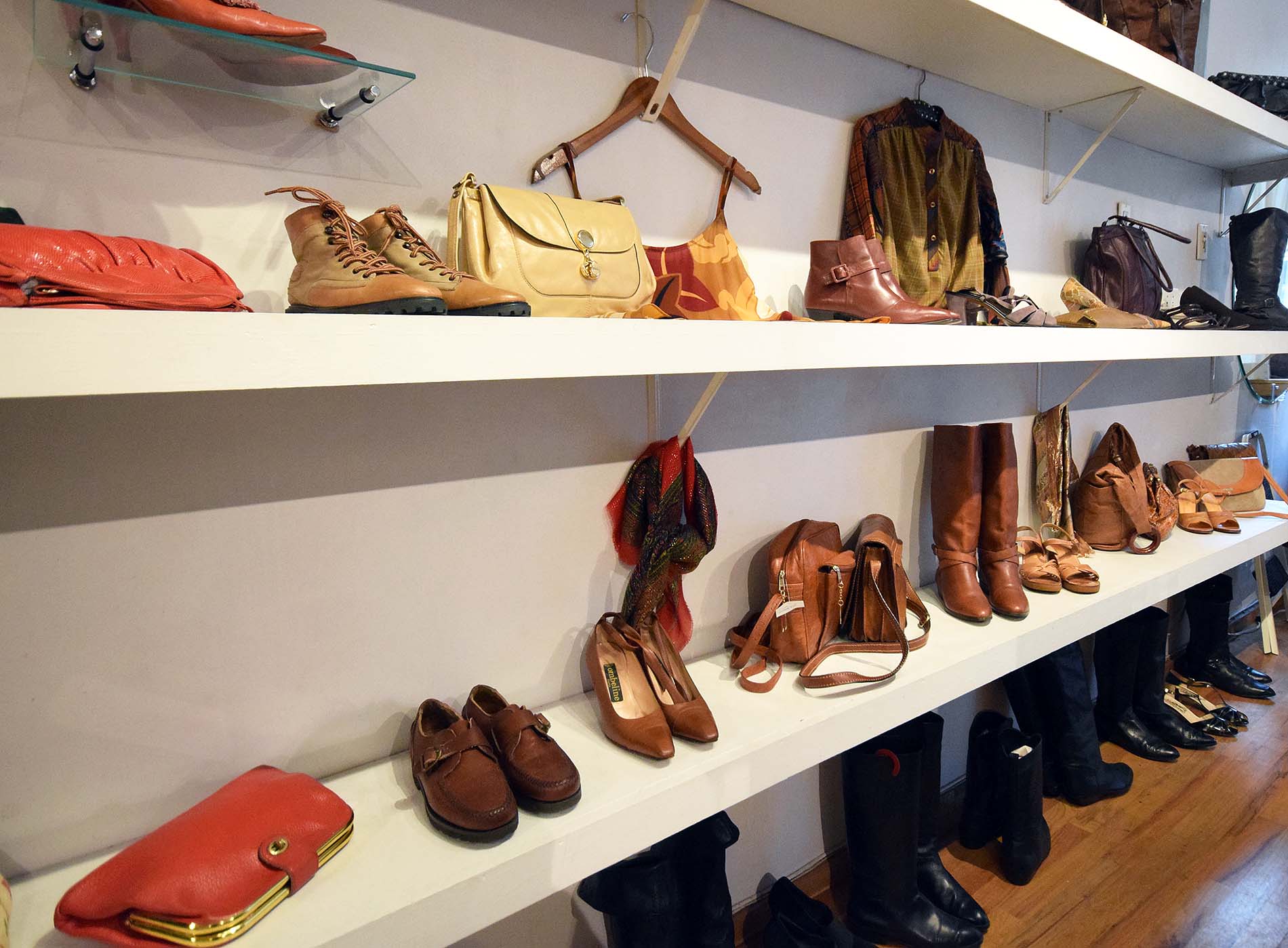
RN: How do you source the pieces for your store, and how often do you get new items in?
EM: I don’t really share how I source my items, but I will say that I have group of professional vintage dealers that buy solely for my shop, and with whom I work with exclusively. I am updating and putting out new items daily.
RN: What do you love the most? Clothes, bags, or shoes?
EM: I guess it is fairly obvious upon entering the store which category of items I love most: accessories! Within the category of accessories, I think handbags and jewelry are tied.
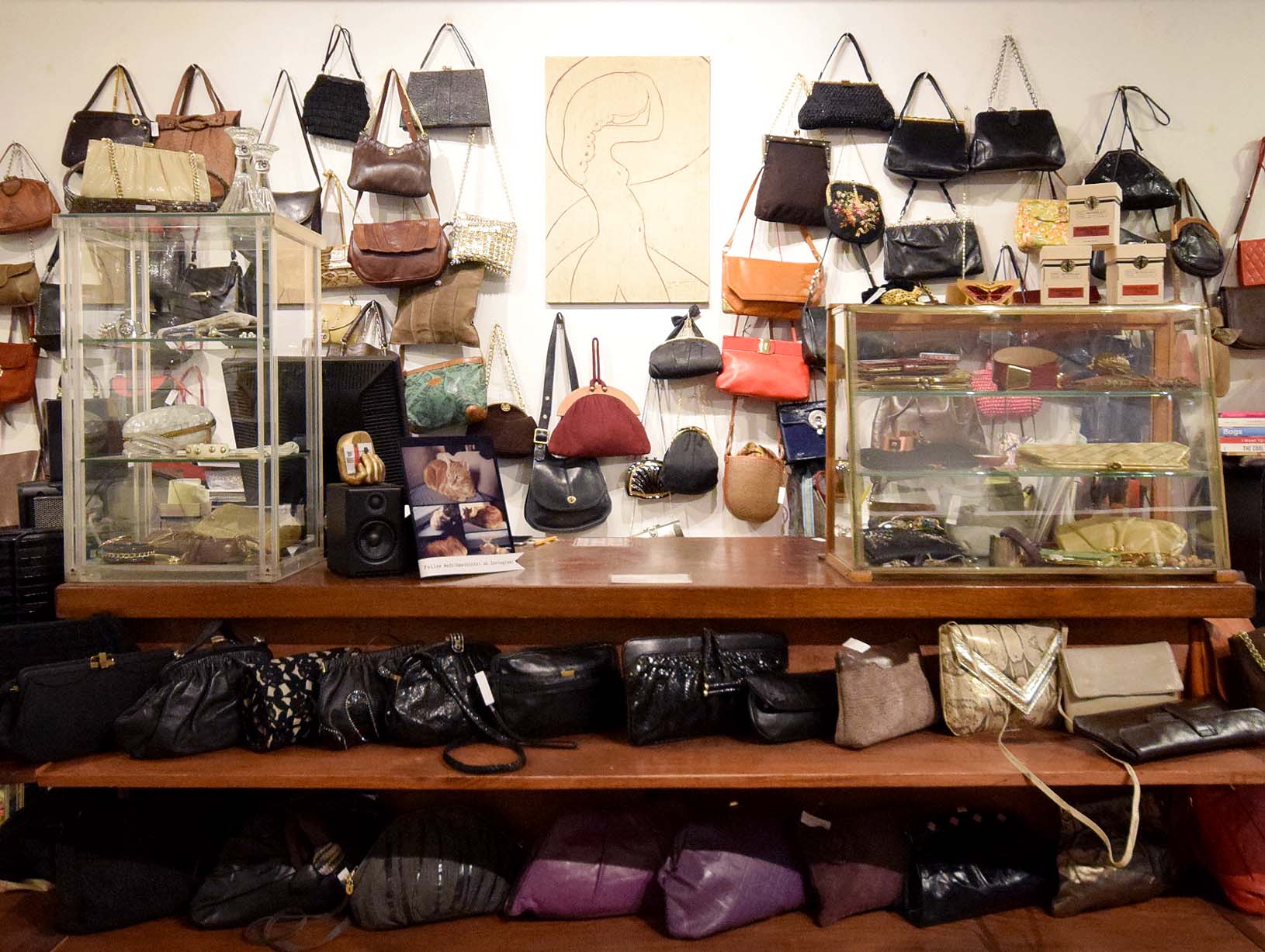
RN: Can you describe the Edith Machinist customer?
EM: The typical EM retail customer is a smart, professional woman who is knowledgeable about fashion, and discerning with her taste. She often buys high-end and indie designers, and wants to mix in unique pieces that no one else will have, which is where vintage fits into her wardrobe. This EM client values and appreciates the quality craftsmanship of vintage pieces, and their timelessness.
Then, there is a whole other client base at EM, which comprises roughly half of the business, and includes the fashion and film industry, such as costumers, stylists and designers. The popularity of period television shows and movies has been a nice boon for the store in recent years, and we have sold wardrobe to shows like “The Americans,” The Duece,” and “Red Oaks,” to name a few current projects. Since its inception, the store, has always served as a resource for designers and design groups. It is challenging to design within a bubble, and especially now, when there is increased pressure within design companies to produce more and at a faster pace than before, using vintage items as a starting point or for market research, is often an important part of the design process. An example of the way in which handbag designers might use vintage for their design process, is borrowing a hardware closure from a vintage bag and incorporating it with a modern silhouette, or a clothing designer using the print from a vintage textile.
RN: What do you love most about your job?
EM: One aspect of the store I enjoy most is the interactions with clients that exceed a mere transaction. Because the store is an immersive environment, it can often be a gateway to more intangible offerings for clients beyond the traditional notion of “retail therapy.” We all know that dressing often figures into deeper issues of how women express and present themselves to the world. It is always exciting to observe the ways in which clients, while trying on clothing, are really donning various personas as they dress and redress, and that during this process the emotional layers can peel back. Also, having the business for 16 years, I feel privileged to have been able to follow and keep in touch with clients through various stages and phases of their lives – some good and some not so pleasant – falling in love, break-ups, job promotions, moving away from NYC, and sometimes moving back to NYC, marriage, children, and everything in between. Because private living space is so cramped in NYC, the store can act at times, like a community space, one that becomes part of the landscape of a neighborhood, and I like very much being part of a larger community. As a long-standing business, I like that my shop offers some geographical stability, that it can be an oasis or refugee against the backdrop of an ever-changing and demanding New York City. Aside from the human aspects of having a store, I love sourcing beautiful items. One of the gratifying challenges with my work is being able to create moving visual stories with these items, and have them make sense to one another and to the larger modern fashion trends. Also, it is exciting and gratifying to see pieces from the store being worn by celebrities, used on the big screen, or having served as inspiration for a design collection.
RN: What do you love most about NYC?
EM: There are so many aspects of NYC that I love. I love the diversity, and being able to encounter and live among people from so many different backgrounds. I think sometimes we forget how much diversity surrounds us here until we travel somewhere else! Also, I love the way in which people from diverse backgrounds are forced to negotiate small cramped public areas, which can lead to beautiful surprises. I think we can all agree that the people watching is stellar in NYC! Like, who needs New York Fashion Week? I mean, isn’t it always Fashion Week here in the city?! And, I am not just talking about model types, but when regular New Yorkers dress for the day, you can find some of the most dapper and chic dressers as well as all-around interesting sartorial combinations. Also, having a business in NYC, I can say that the client base here is made up from some of the smartest and most educated people anywhere, who aren’t afraid to be critics (which can be tough at times), and who keep me on my toes, and seriously challenge me to deliver the best, most interesting line-up I can. By virtue of having a store in NYC makes me have a stronger store, and it would not be the same if I had the shop somewhere else.
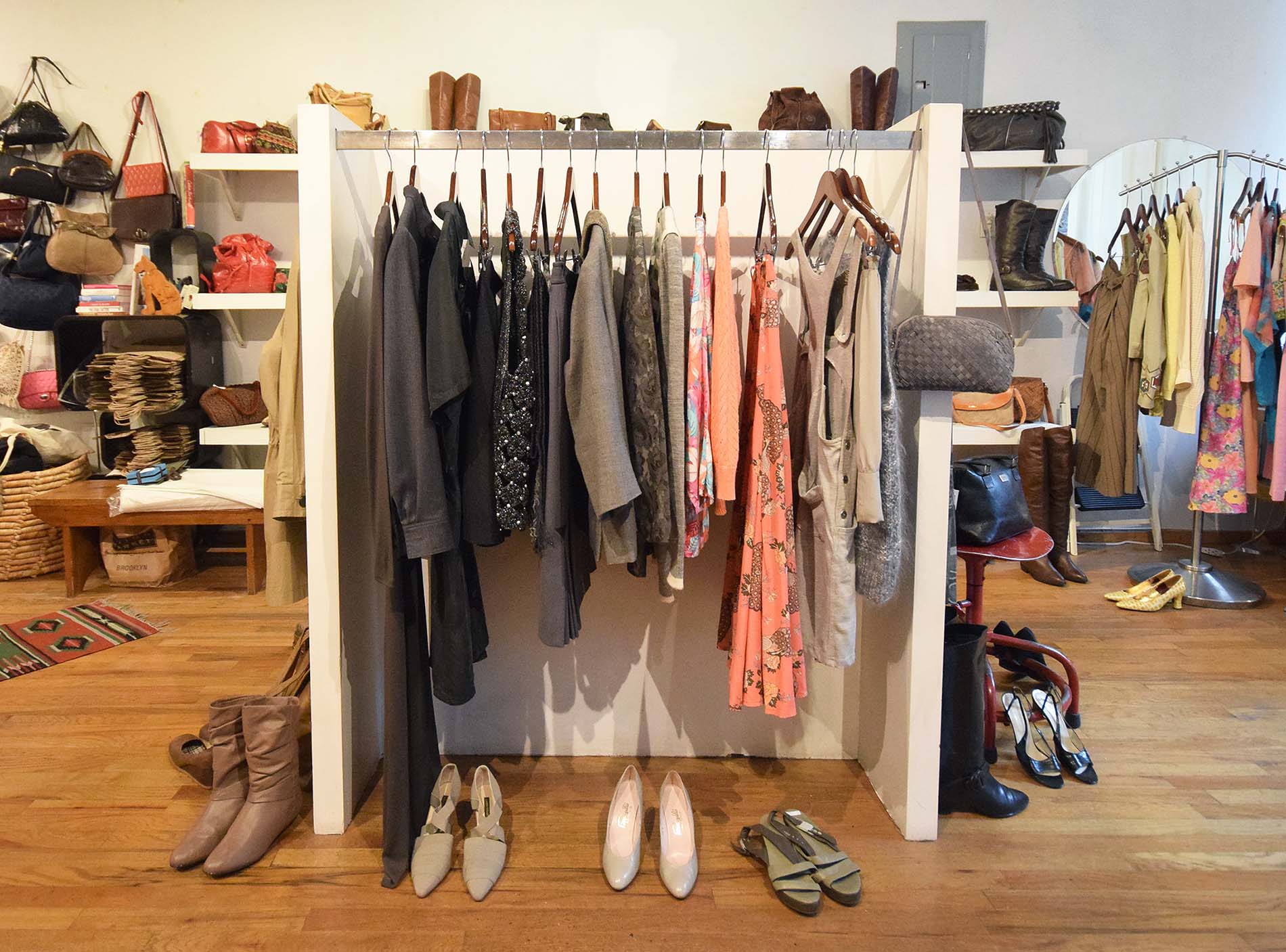
RN: What do you dislike the most about NYC?
EM: The trend of escalating rents is one aspect of NYC-living I most dislike. Watching many great and longstanding businesses suddenly close because of rent considerations is heartbreaking. Obviously, this is an issue I take personally and feel a personal stake in. Seeing so many chain businesses like Walgreens, Chipotle or a bank branch crop up where independent or mom and pop businesses once stood, gives me agita! We didn’t gravitate to NYC to be surrounded by these “mall”-style businesses that you can find anywhere in the US, but, rather, were drawn in by the independent businesses that nourish us and reflect us as unique New Yorkers! Of course, this trend extends to personal renters, and NYC has been losing so many great artists as they relocate further and further into the outer reaches of the boroughs, and sometimes upstate or out of state completely with the cost of living so high. Nothing will change unless the NYC bureaucracy steps in and creates incentives for landlords to keep tenants long-term. Sorry to get on the soap box here!
RN: What trends do you see resurfacing today from the past?
EM: Fashion is, of course, very cyclical, and it is interesting to study what trends disappear and then reappear over the decades and why their timing is what it is, which can be related to so many factors. An example of a trend in clothing that has reappeared is women wanting men’s-wear style blazer jackets: think Diane Keaton in Annie Hall. I think this relates to the feeling of empowerment among women sweeping the nation, and dressing for that empowered role! A micro-trend within this men’s wear jacket-wearing, is that the shoulders have some height – think shoulder pads – which has both 1940’s and 1980’s influences, and again points to this notion of a “power” suit!
RN: In your opinion, what makes something a classic?
EM: There are a few criteria that make a piece a classic for me. If this vintage piece can be seamlessly worn with modern pieces, and even appear to be current, the piece transcends its origin or decade, and is classic. Classic pieces are usually very simple with few embellishments, hardware or unnecessary details, and instead, have one main attribute, like a great silhouette. Also, classic pieces tend to be the “building blocks” for an outfit and so can be worn continuously and incorporated into many different looks like a trench coat or an envelope bag.
RN: How would you describe your own personal style?
EM: Because I am surrounded by so many interesting and varied fashion pieces, my personal style veers towards a simple uniform. Interestingly, I have noticed that many people who work in and around fashion, often end up wearing a basic uniform. I always think of the late, great street-style photographer, Bill Cunningham, who wore a literal French sanitation worker’s uniform made of a heavy blue chambray every day. Cunningham, a genius, for so many reasons, was able to elevate the working-person’s uniform by virtue of his place in the fashion aristocracy. My version of a uniform is a blazer and skirt in navy or black with layered jewelry. In my fantasy, I too, am aiming for a classic French look (although not a sanitation worker) because like every fashion lover, I am a Francophile at heart, but unfortunately, I think I end up with a New England prep school look. Oh well ;(
